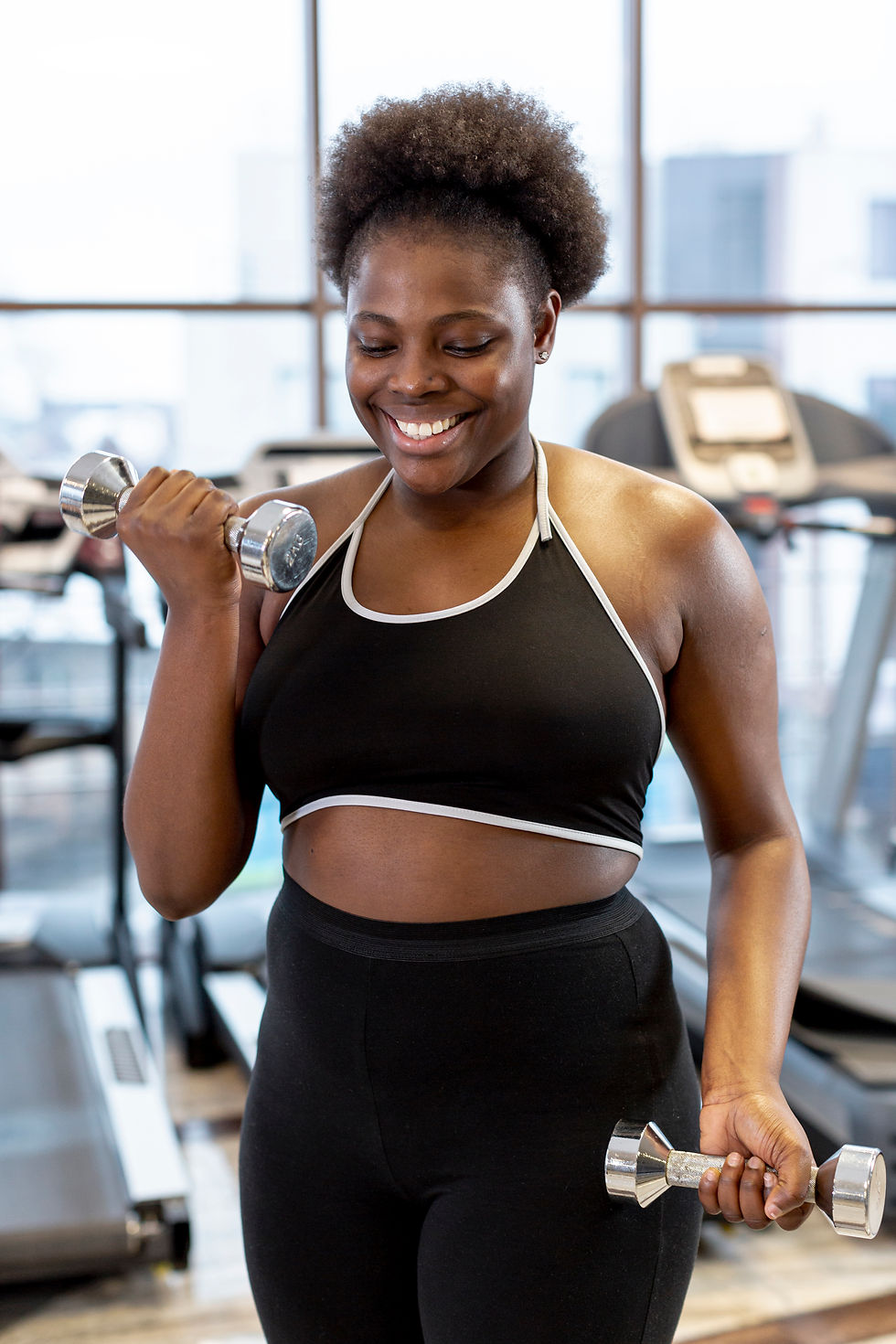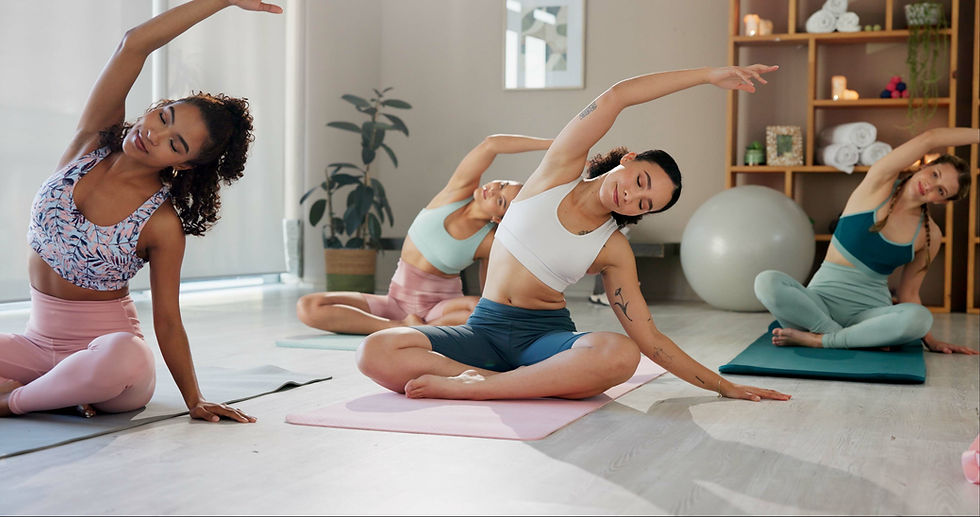How to Stick to Working Out
- kukyoto22
- Jul 30
- 5 min read
Updated: Aug 6
In today’s busy hectic demands from work and family life it is often difficult to find a balance, for our individual self-care which we find that we desperately need. For those of us with invisible disabilities finding that balance is key to us being able to live our best lives. Stress for those of us with invisible disabilities in particular mental health; Complex PTSD, Depression/severe Depression is very devastating and overwhelming for us. Thus, not finding that balance between work and family or personal life balance can lead to mental break down crisis due to the increased stress levels that trigger the invisible disabilities, I know this for a fact as I have experienced it.

These triggers can lead to unexplained joint and muscle pains called Somatic Pains which we often get these misdiagnosed by our well-meaning doctors as Rheumatic pains and we get prescribed all manner of strong drugs like morphine Gabapentin etc sadly these only mask the issue but do not treat or deal with the cause of the Somatic pains which mainly are an outcome of the Complex PTSD, Depression/severe Depression. I have found that exercise helps reduce the intensity of the Somatic pains and also deep breathing exercises.
I have found that for the most part depending on how motivated I am in getting in touch with myself and becoming aware of my body and mind and working through the emotional pain that is often the cause of the Somatic pains; the somatic pains usually resolve much quickly without the need for taking strong drugs like Morphine etc.
Many years I have been in search of connection, human connection as an individual with invisible disabilities (ACE’S) connection and feeling you are worthy of acceptance is very important.
I joined so many gym facilities that had no warmth no real connection or investment in me as a person, their only investment was my £150 membership fees and no interest what so ever as to whether I was gaining any benefit from using their facilities. Time and time again I would seek their support in coaching me during workouts but this would only come with an extra charge and only for x2 sessions which were often carried out by an individual who was not invested in my outcome. I had given up hope when I came across this gym called Curves from the very beginning, I felt valued as a person, I was given a x4 workout session where I had 1-1 coaching at no extra charge being shown how to effectively use the machines and also how to cool down after every workout.
But the real difference that makes this gym/fitness club stand out from the best of the gyms/fitness clubs out there …is it’s connection with it’s members, and it’s invested interest with it’s members, at every session there is a coach that inspires you at no extra cost to you, monthly there is weighing and measurements, and review of your fitness goals at no extra cost, which further encourages you to be motivated enough to commit to your wellbeing and to work harder to reach your goals, but much more than that it is a friendly supportive environment where you feel you matter and feel accepted and valued as an individual, from the moment you enter the gym the coach greets you by your name with a big warm welcoming smile…
Curves is much more than just a gym it’s a community of human connection and brings out the best in you… so what you waiting for?
Why Sticking to a Workout Routine Is So Difficult and So Important

The path to consistency in working out is different for everyone, but for those navigating trauma, mental health challenges, or chronic stress, it often starts with one essential foundation: a sense of safety and connection.
Your nervous system doesn’t respond well to pressure or punishment. But it does respond to care, trust, and gentle motivation. That’s why your environment matters. And so does your “why.”
For many, the challenge isn’t laziness or lack of willpower—it’s overwhelm, shame, or fear of failure that gets in the way. If exercise has been tied to past pain or unrealistic expectations, even stepping into a gym or putting on workout clothes can trigger resistance. This is especially true for individuals with Complex PTSD, anxiety, or depression, where the inner dialogue is often critical and self-defeating.

By shifting the focus from aesthetics or performance to healing, strength, and well-being, movement becomes more accessible. When you connect your workout routine to your personal values—like improving your mood, feeling stronger for your children, or reclaiming ownership of your body—it’s easier to stay committed, even on hard days.
How to stick to working out? The key isn’t perfection; it’s permission—to start small, to rest when needed, and to celebrate every step forward. Sticking to a routine rooted in self-compassion, rather than self-judgment, lays the groundwork for true resilience and lasting transformation.
5 Heart-Centered Ways to Stay Committed to Working Out
💬 1. Start Small and Stay Consistent
Even a 10-minute walk can be transformative if you do it daily. Set realistic goals that feel kind and doable.
🤝 2. Find an Uplifting Community
Whether online or in person, support from others (like Vivien found at Curves) can help sustain your motivation.
🫁 3. Connect With Your Breath and Body
Incorporate mindful movement and breathwork to help calm your nervous system and ease into exercise.
📆 4. Schedule It Like Self-Care
Treat your workout like a sacred appointment with yourself. Show up for it the same way you would for a loved one.
📈 5. Track Emotional Wins, Not Just Physical Ones
Notice how your mood, energy, and mental clarity improve—not just your weight or strength.
Movement as Medicine
Physical movement, especially when done with intention and emotional awareness, is a powerful tool for healing trauma, releasing trapped energy, and rebuilding a sense of self-trust.

As mentioned above, somatic symptoms often mimic physical illness but stem from unresolved emotional pain. When you begin to listen to your body, work with your breath, and move in ways that are nourishing instead of punishing, your body will respond with more ease, less pain, and greater clarity.
Gentle practices like stretching, walking in nature, dancing, or mindful exercise allow the nervous system to shift out of survival mode and into a state of calm regulation. This opens space for emotional release and inner resilience. Movement becomes more than just fitness—it becomes a form of self-respect, an act of empowerment, and a daily reminder that your body is not your enemy, but your ally on the path to healing.
In choosing movement that meets you where you are, you affirm your right to take up space, to heal at your own pace, and to reconnect with the wisdom of your body—one breath, one step, one kind gesture toward yourself at a time.
How to Stick to Working Out Final Thoughts
Sticking to a workout routine isn’t just about physical fitness—it’s an act of emotional resilience, self-compassion, and inner healing. Especially for those living with invisible disabilities or trauma, exercise can become a path toward reclaiming your strength and reconnecting with your body in a safe and empowering way.

You don’t need to do it all at once. You just need to start with one small, intentional step—and surround yourself with environments and people who see you, support you, and walk beside you on the journey.
You are worthy of feeling strong, balanced, and connected—inside and out.
If this post resonates with you, dive deeper into this journey in my book Reinvent Yourself. And if you’re looking for support in applying these tools with like-minded peers, connect with me through Instagram or LinkedIn to learn more about my self-transformational program and how to be your best self.



Comments